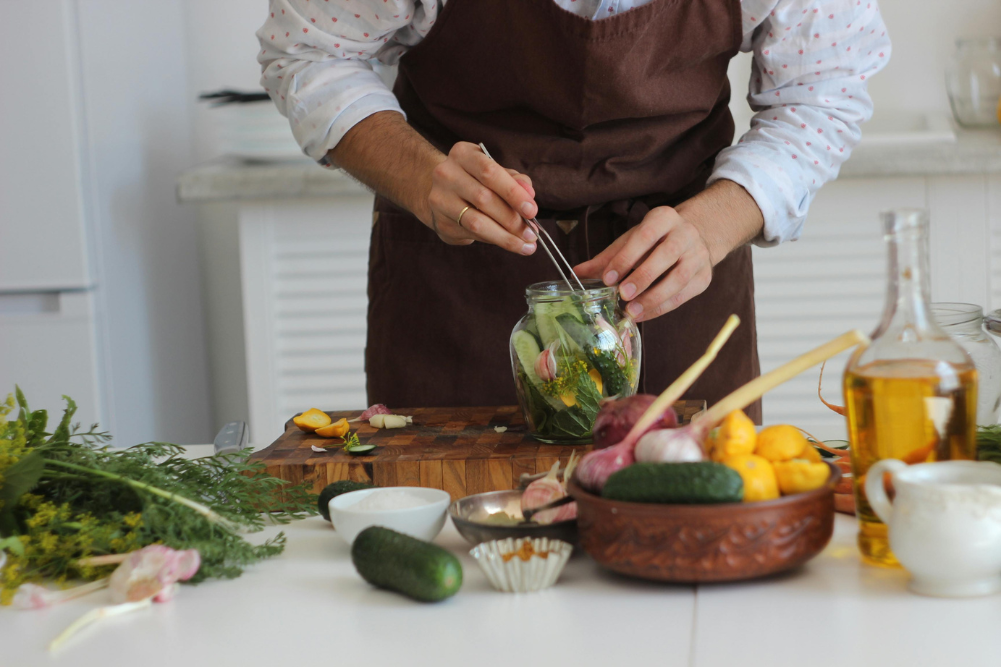The benefits of ginkgo
Ginkgo biloba is a rather grand tree. It can grow up to 35 metres and live for more than 2000 years — another great recommendation for its anti-ageing properties! Over the ages it was abundant throughout the continents but died out virtually everywhere but China by 2 million BCE. It wasn’t until about 1100 CE that it was recorded in any Chinese texts and then only as a food. It wasn’t until hundreds of years later that the powerful properties of this plant were fully understood.
Ginkgo prefers moderate climates and is most commonly found in China and Japan. It is fascinating to discover that the ginkgo tree was reported to be the only plant found to survive and flourish close to the impact site of the atomic bombs dropped on Japan during WWII. While many other plants died or suffered severe mutations, the ginkgo thrived.
Ginkgo ingredients
So how can this fantastic plant have such a strong effect on your health? The answer is found within its phytonutrients. These active elements are all part of the plant’s defence and reproduction systems as they act to repel danger, attract pollinators or encourage animals to eat them and so disperse the seeds.
The ginkgo plant has two nutrients of greater interest: flavonoid glycosides and terpene lactones. The flavonoids are of particular importance. These substances are antioxidant and are used by the tree to protect itself from UV radiation and to act as a light screen. As well, flavonoids are involved in growth regulation and protection from infection.
It has also been shown that in humans these flavonoids strengthen capillaries and help the body deal with environmental stress. Ginkgo seems to have the same UV and infection-protective antioxidant activity on humans as on itself as well as a strong circulatory stimulating effect.
Ginkgo in your body
Probably the most important effect of ginkgo comes through its antioxidant action. Antioxidants reduce free radicals that are circulating in your body. Too much bad food, stress and pollution all lead to a greater amount of free radicals and so to increased cell damage. By reducing these nasties, ginkgo reduces cell damage and slows the ageing process. Again, there is no surprise that it is reputed to increase longevity. This reduction of cell damage can have both an internal effect on organs and external effect on the skin.
Internally, most studies focus on its positive effects on the cardiovascular system. It reduces the effects of fat oxidation and so leads to reduced chances of atherosclerosis or hardening of the arteries. This positive effect on heart health can also be attributed to ginkgo’s blood-thinning effects. These occur because of its ability to reduce platelet activating factor (PAF) in the body, thus getting blood flowing more freely. PAF is also linked to inflammation, especially in the respiratory system, so ginkgo is used by some herbalists to support the lung and bronchial function of asthmatics.
The anti-platelet activity also means improved blood circulation, especially to the extremities. The result is better blood supply to the arms, legs, hands, feet and brain. This great news for not only those who feel the cold in winter but also anyone wanting a bit of a brain boost. Greater blood supply to the brain means clearer thinking and better concentration. In fact, a lot of research has shown promising results for ginkgo’s prevention and support of Alzheimer’s disease.
It’s interesting that all these health effects are seen when using the leaf of the ginkgo tree, but in fact traditional Chinese herbalists focus on the seed of the plant. Historically, it has been used to treat excessive urination and lung irritation and to help the body fight off infection. Most of the supplements found in Australian and New Zealand shops and clinics are derived from the leaf, so keep this in mind when at your healthfood shop.
Taking ginkgo
Another important issue when considering ginkgo is its possible side-effects. Because of the plant’s anti-platelet effects, those taking blood thinners such as warfarin or aspirin need to proceed with caution and seek the advice of a trained herbalist before beginning supplementation.
Assuming there are no contraindications for you, how can you choose the best way to take this herb to achieve the best result? The main options are as a tea, in tablet or in a liquid extract. Tea is a great gentle way to gain the benefits of gingko, but to be effective a teaspoon per cup must be used with three cups taken daily. If you’re not much of a tea drinker, tablets or extracts may be more up your alley. The dosage of these depends entirely on the strength of the supplement, but about 4000–8000mg is recommended in tablet form or 4–8ml of a standard-strength extract daily. Remember, though, when in doubt, check with a professional.
Rowena York is a Melbourne naturopath, herbalist and nutritionist with a particular interest in food as medicine. E: row_y@hotmail.com







